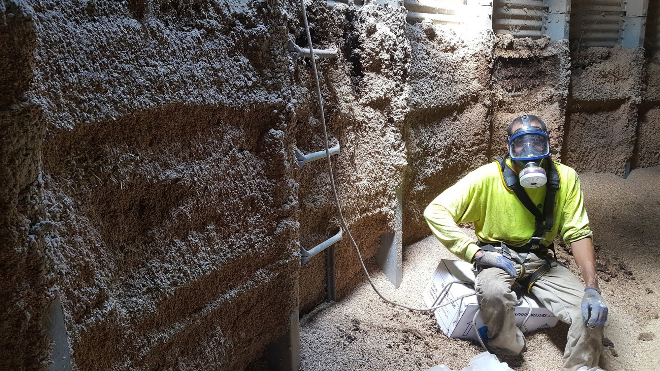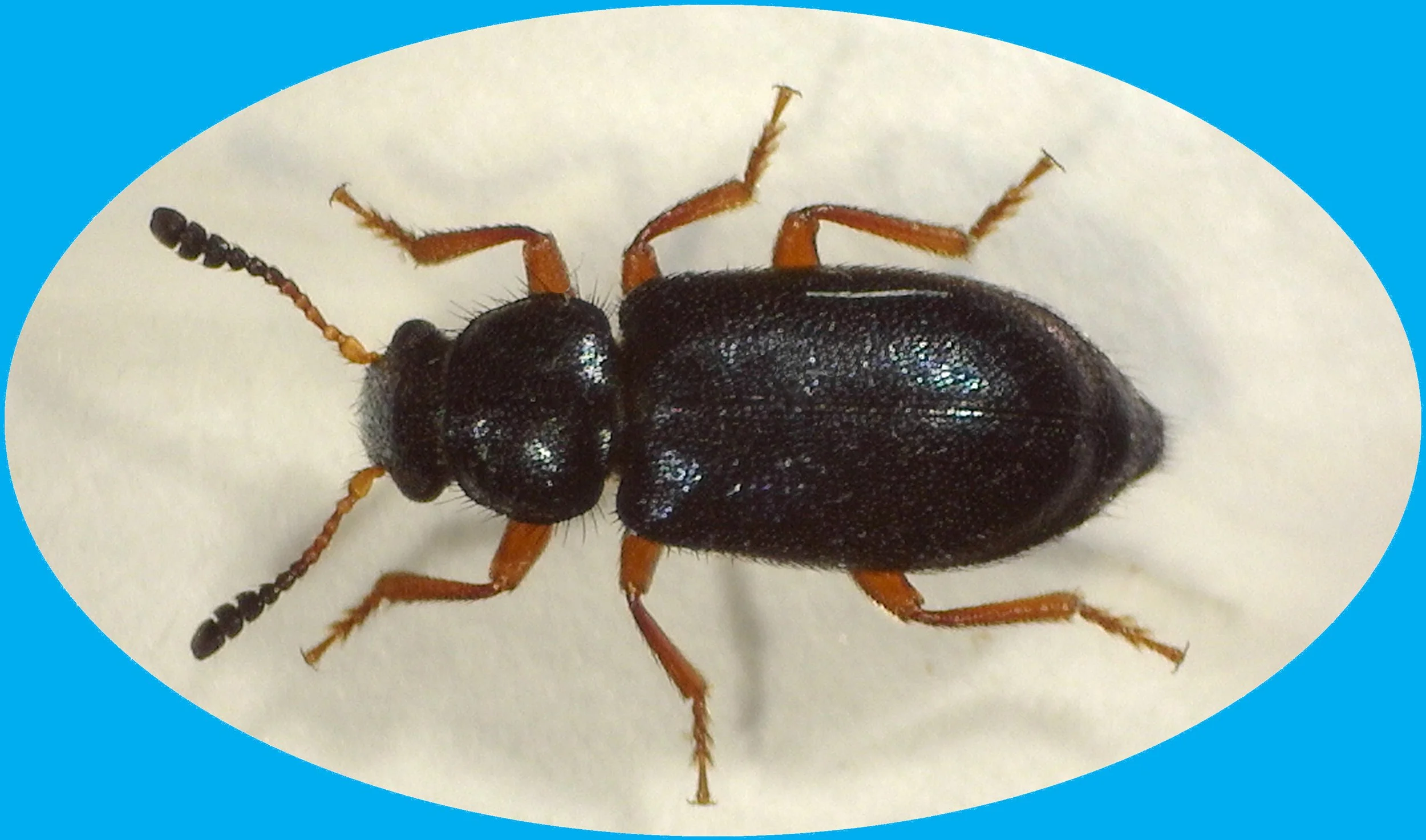Foreign Grain Beetles: Understanding Their Behavior, Risks, and Effective Control Strategies
Written by Ethan Estabrook, BCE, Research Entomologist and Product Support, Insects Limited, Inc.
Foreign grain beetles, Ahasverus advena, are small, reddish-brown insects that become particularly active as pests in August and September, coinciding with cooler weather and increased rainfall.
These beetles measure about 1/12 inch in length and are identifiable by their three-segmented antennal club and tiny knobs on the front corners of their thorax, visible under magnification (Mason 2018).
While their larvae resemble those of other stored grain insects, specialized training is required for accurate identification (Calvin 2023).
Figure 1. An adult foreign grain beetle, Ahasverus advena. Notice the tiny knobs on the prothorax and three-segmented antennae. Photo Credit: U.Schmidt, 2014.
Despite their name, foreign grain beetles primarily feed on fungi rather than grain (Calvin 2023). They are commonly found in warehouses and storage facilities where moldy grains or bins are present.
Additionally, these beetles can become a nuisance in newly built structures with moist, decaying lumber, leading to infestations.
Pallets made from new or green lumber provide ideal conditions for wood-decaying fungi, which can result in infestations even in wrapped, non-food-grade items.
Older buildings with mold, decaying organic matter, or spoiled stored products are also susceptible to infestations by these beetles.
Their appearance indoors, especially in late summer or early fall, often raises concerns as adult beetles seek sheltered places to overwinter. While these beetles do not bite or cause structural damage, they pose a potential health risk as carriers of harmful organisms like Salmonella, which is particularly concerning in food-processing and food-handling facilities.
Foreign grain beetles are strong fliers and are attracted to lights. Their life cycle lasts two to four weeks, depending on temperature and relative humidity (RH). Reproduction does not occur at temperatures below 59°F or in conditions where RH is below 65% when temperatures are under 77°F (Mason 2018).
In optimal conditions (80-90°F), eggs hatch in four to five days, with the larvae developing over approximately 15 days, followed by a pupal stage lasting four to seven days. Adult beetles can live up to 250 days, and females lay their eggs in moldy grains, which serve as food for both larvae and adults (Calvin 2023).
Figure 3. An example of sanitation issues at a grain elevator that are conducive to insects like the foreign grain beetle.
Effective management of foreign grain beetles begins with eliminating moisture, which is crucial for fungal and mold growth—the beetles’ primary food source. Improving air circulation and thoroughly cleaning areas like drains and equipment legs to remove decaying or greasy matter are essential steps.
Preventing beetles from entering buildings by properly screening and sealing doors, windows, and other entry points is also important. (El Damir 2012)
In areas with temperatures above 59°F, insect light traps can be used to monitor flying beetles and identify infestation hotspots. While insecticides may be necessary, they should be applied strategically, focusing on breeding sources in damp areas. Dust formulations are preferred for applying insecticides in cracks, crevices, and voids. (El Damir 2012)
Figure 4. An example of a high humid environment that is conducive to insects like the foreign grain beetle.
In grain storage facilities, it is crucial to thoroughly clean bins before introducing new grain and to regularly monitor for hotspots, mold, or insects.
If these conditions are detected, aeration can help reduce moisture and temperature.
Fumigation should be considered only as a last resort and should be conducted by professionals due to the high toxicity and technical expertise required. (Calvin 2023)
Insects Limited offers products to assist in monitoring foreign grain beetles, including the All Beetle Trap with Gel Attractant (IL-2700) and the All Beetle Trap with Stored Product Beetle Lure (IL-2800).
Although no specific pheromones are available for these beetles, attractants using fungal volatiles have shown promise in luring them.
Figure 5. Insects Limited's All Beetle Trap with Pantry Patrol gel can attract foreign grain beetles.
References
Calvin, D. (2023, June 19). Foreign Grain Beetles. Penn State Extension. Foreign Grain Beetles (psu.edu)
El Damir, M. (2012, June 29). [Pest Profile] Follow the Moisture. Pest Control Technology (PCT). [Pest Profile] Follow the Moisture - Pest Control Technology (pctonline.com)
Mason, L. (2018, November). Foreign Grain Beetle Ahasverus advena (Waltl). Purdue University. FOREIGN GRAIN BEETLE Ahasverus advena (Waltl) (purdue.edu)
Related Insect and Pheromone Posts
Read more about insects and pheromones in these related posts:
Product of the Month - PTL Multi-Species Kit (IL-408-10)
Insect of the Month: Almond Moth (Ephestia cautella)
New Dirty Dozen Poster Now Available - Enhance Your Pest Management Efforts Today
Insects Limited, an Insect Pheromone Company
Insects Limited, Inc. researches, tests, develops, manufactures and distributes pheromones and trapping systems for insects in a global marketplace. The highly qualified staff also can assist with consultation, areas of expert witness, training presentations and grant writing.
Insects Limited, Inc. specializes in a unique niche of pest control that provides mainstream products and services to protect stored food, grain, museum collections, tobacco, timber and fiber worldwide. Please take some time to view these products and services in our web store.








